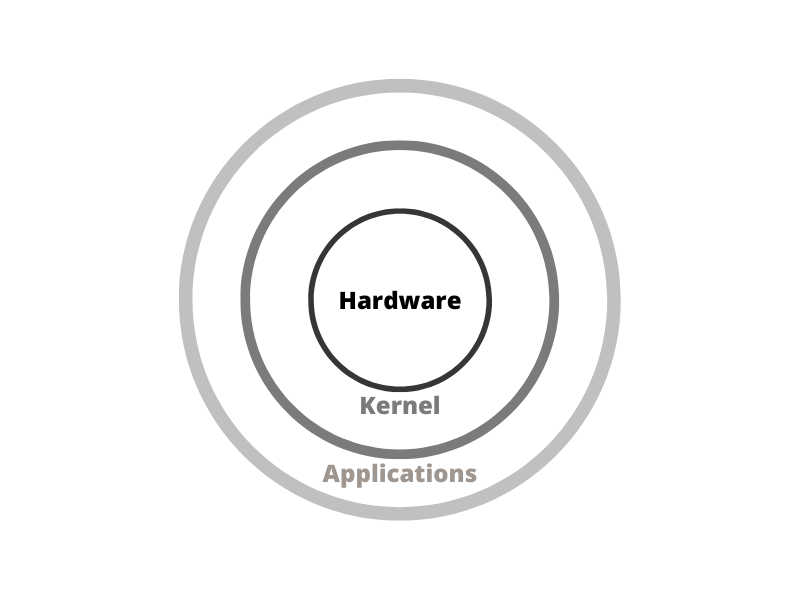Linux Kernel vs. Red Hat: Navigating the OS Jungle
Navigating through the world of software can feel like a maze at times. Take Linux Kernel and Red Hat, for example. From my professional experience, I’ve seen many struggle to discern the two, and that’s perfectly okay. It can get confusing, but once you get the hang of it, it’s quite straightforward, and I’ve been through this learning curve myself.
In essence, the Linux kernel is the core part of any Linux operating system while Red Hat is a company that offers Red Hat Enterprise Linux (RHEL), a distribution based on the Linux kernel, tailored for businesses.
But hey, don’t stop here! There’s a whole lot more to discover. Let’s keep going and dive deeper into these differences.
What is Linux?
Description
The Linux kernel is the core part of the Linux operating system, which interacts directly with the hardware of the computer. It’s open-source, which means its source code is freely available to the public.
History
Created in 1991 by Linus Torvalds, a Finnish computer science student, the Linux kernel started as a personal project. Torvalds was dissatisfied with the existing operating systems and wanted to create a free and open one.
Characteristics
Being an open-source project, the Linux kernel is adaptable. Developers can modify it and create their versions of the operating system, leading to various “distributions” or “distros.”
Its high stability and resilience make it widely used in many professional environments.
Purpose
The Linux kernel handles system operations, such as controlling hardware and executing processes.
It forms the base of various distributions that extend its functionality, making it suitable for servers, desktop computers, smartphones, and embedded systems.

Examples
The Linux kernel serves as the foundation for various distributions like Ubuntu, Debian, and Fedora. These distributions add additional software and tools, creating a complete operating system.
Introducing Red Hat

Description
Red Hat, Inc. is an American multinational software company known for its open-source software products, with Red Hat Enterprise Linux (RHEL) being one of their most notable.
History
Established in 1993 by Bob Young and Marc Ewing, Red Hat began as a distributor of Linux and UNIX software. The name originates from a red Cornell University lacrosse hat that Ewing wore.
Characteristics
Red Hat’s main product, Red Hat Enterprise Linux, is a Linux distribution widely recognized in the business and enterprise domain. It’s reputed for its robustness, reliability, and comprehensive support offered by Red Hat, Inc.
Purpose
RHEL finds extensive use in business environments for servers, workstations, and cloud computing. This preference arises from its reliable performance and the extensive support provided by Red Hat, Inc, including regular updates, patches, and access to a professional support team.
Manufacturing
Red Hat employs a team of professionals to enhance the Linux kernel and package it as RHEL. They also offer training, consulting, and a certification program for its products, providing a comprehensive service rather than just a product.
Main Differences between the Linux and Red Hat
Let’s start by summarizing the key differences between the Linux Kernel and Red Hat in a table:
| Feature | Linux Kernel | Red Hat |
|---|---|---|
| Origin | Created by an individual, developed by the community | Developed by a professional team at Red Hat, Inc. |
| Cost | Free and open-source | Free to use, but support services and updates are chargeable |
| Customizability | Highly customizable with various distributions | Less customizable but highly standardized |
| User Support | Community support | Professional support provided by Red Hat, Inc. |
| Target Users | Forms the foundation for various distributions | Tailored for businesses and enterprise environments |
The Origin Difference
While both the Linux kernel and Red Hat are related, their origins differ. The Linux kernel was created as a free and open kernel by Linus Torvalds, maintained by a community of developers. Red Hat, on the other hand, is a corporate creation, focusing on offering a supported Linux distribution for businesses.
The Cost Factor
The Linux kernel, being an open-source project, is entirely free. You can download, modify, and distribute it without any cost. However, while Red Hat is free to use, it charges for support services. Red Hat’s business model is based on offering subscription-based support services, which include regular updates, patches, and technical support.
Customizability and Standardization
The Linux kernel is incredibly adaptable, allowing developers to create a wide variety of Linux distributions catering to various user needs. Red Hat, however, has less flexibility. Red Hat focuses more on standardization and compatibility, offering a product that integrates seamlessly into business and enterprise environments.
User Support
Support for the Linux kernel is generally community-based, accessible through forums, blogs, and tutorials. Red Hat, contrastingly, provides professional support services. With a subscription, users gain access to regular updates, patches, and support from a professional team.
Target Users
While the Linux kernel serves as the base for various distributions that anyone from beginners to experts can use, Red Hat primarily targets businesses and enterprise environments. Red Hat provides services critical to businesses, such as support and training, making it a comprehensive solution for enterprise needs.






